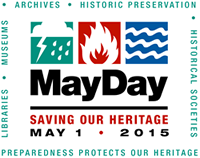
Understanding the components of disaster response is key in successful recovery of collections of any type, size, and budget. This webinar will show professionals and volunteers the steps needed to save effectively collections, including:

- What happens to collections after fires, floods, mechanical failures, and other events
- Recovery logistics, team building, and securing supplies
- Safety and health practices
- Working with first responders, engineers, contractors and conservators, and local resources
- Collections triage, handling practices, drying options, soot and mud cleaning techniques, and mold control
- Long-term recovery: conservation treatment and funding
Featured Speaker:

- Susan Duhl is an Art Conservator and Collections Consultant, providing assessments, consultations, and conservation treatment for institutions and individuals throughout the United States and internationally.Susan’s specializes in disaster prevention and strategic recovery of art, archival, and historic collections from natural, mechanical, accidental, and man-made disasters. Capabilities include assessments, pre-incident planning, prevention, emergency response, strategic planning for recovery, and conservation treatment. Clients include private collectors, historic houses and societies, and institutional collections of all types and sizes.
Recorded: Friday, 1 May 2015
Duration: Approximately 1 hour 20 minutes
Duhl Handouts and PowerPoint Presentation
For closed captions, please access this via this link.

All activities hosted by the Foundation of the American Institute for Conservation for MayDay 2015 are sponsored by Polygon Group, offering document recovery, emergency planning services, property damage restoration, and temporary humidity control across the globe.





